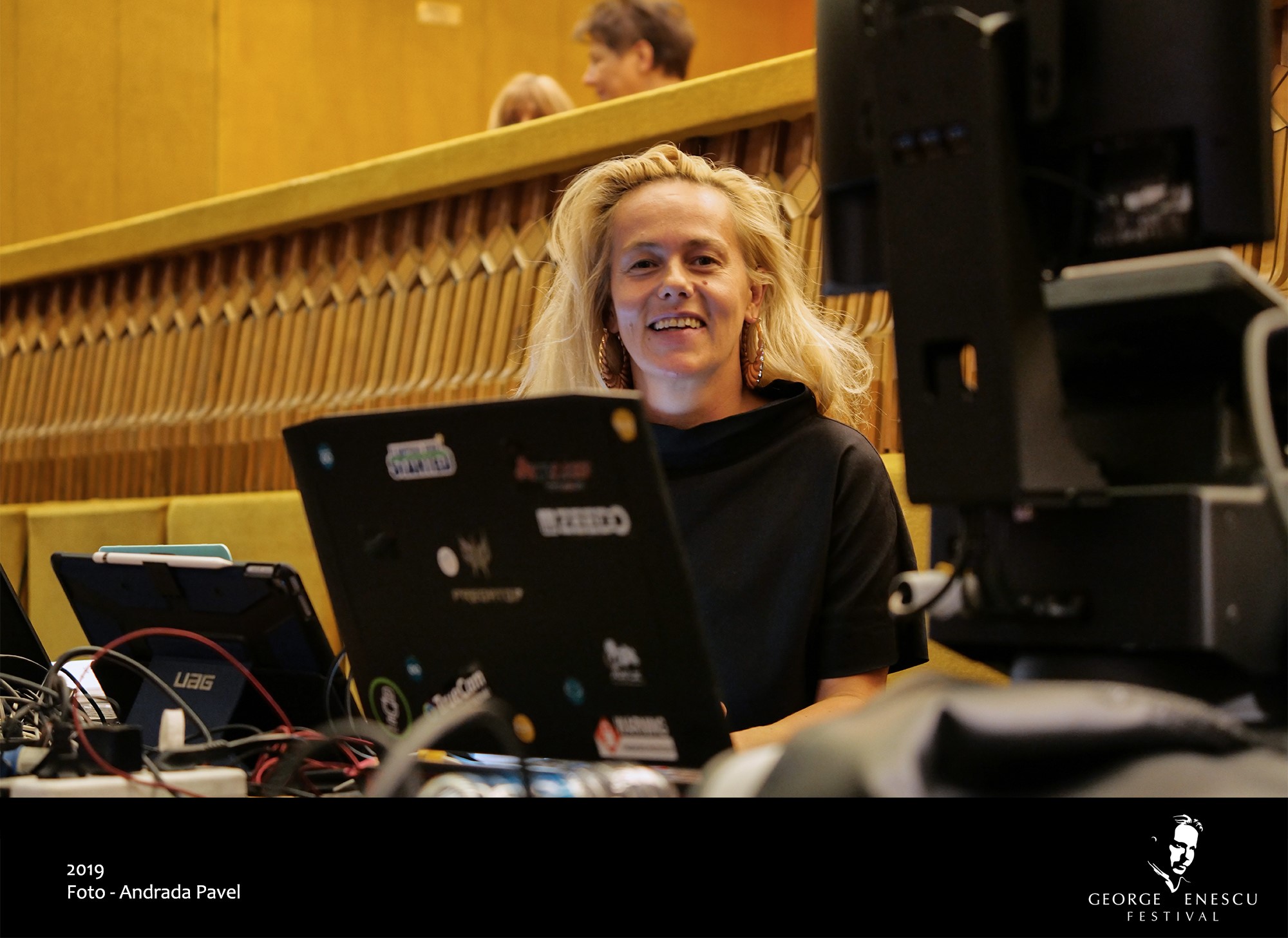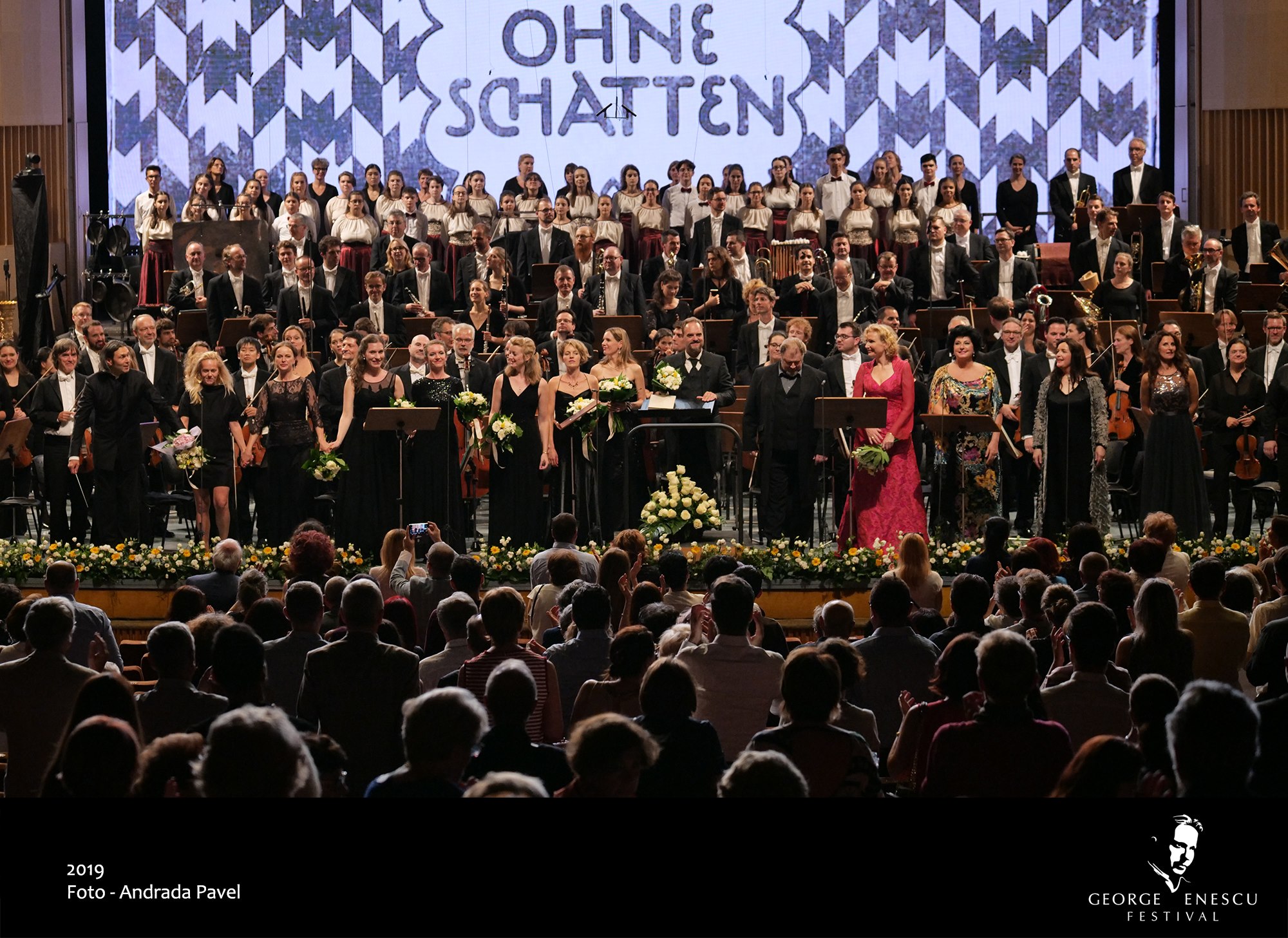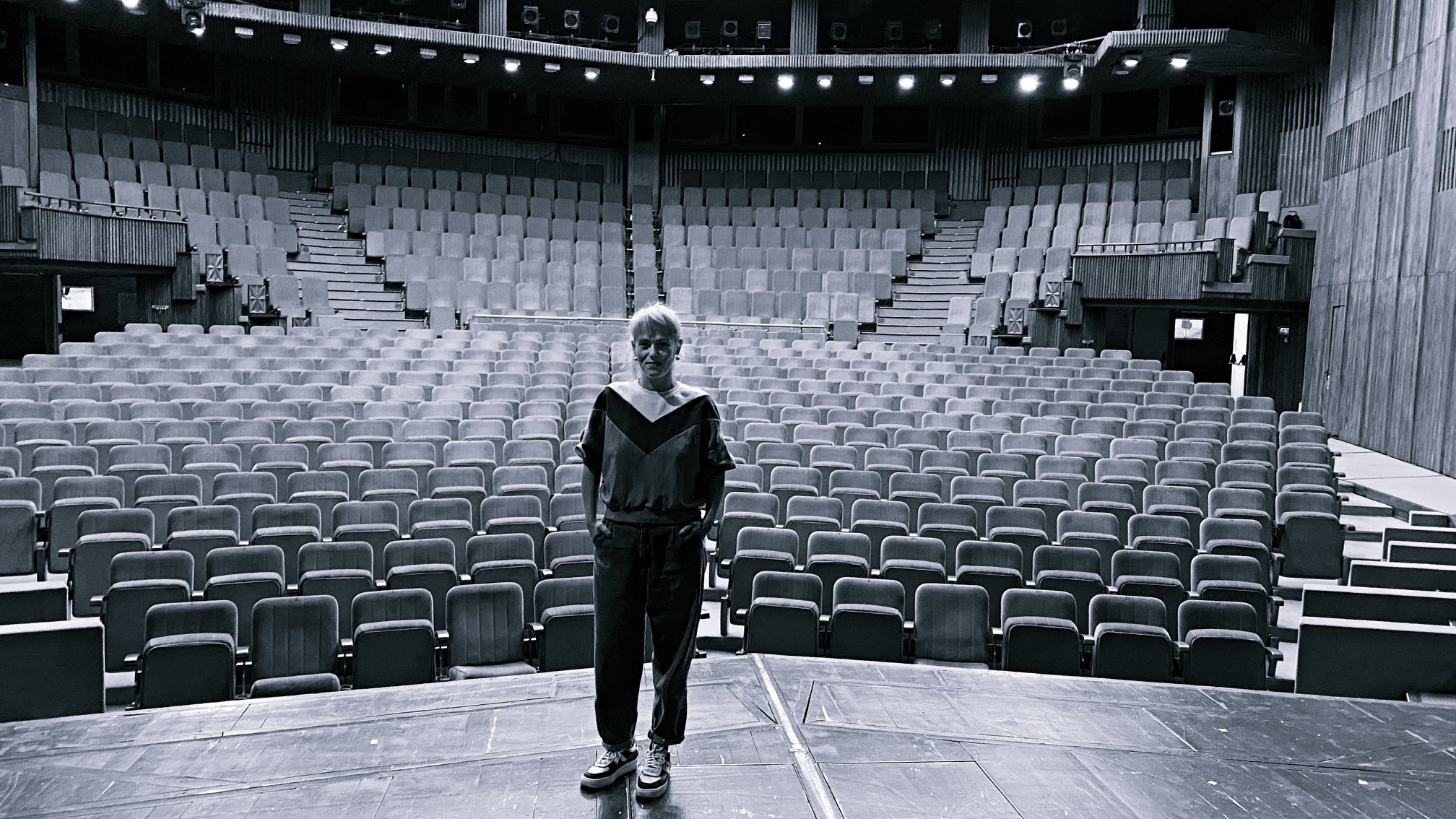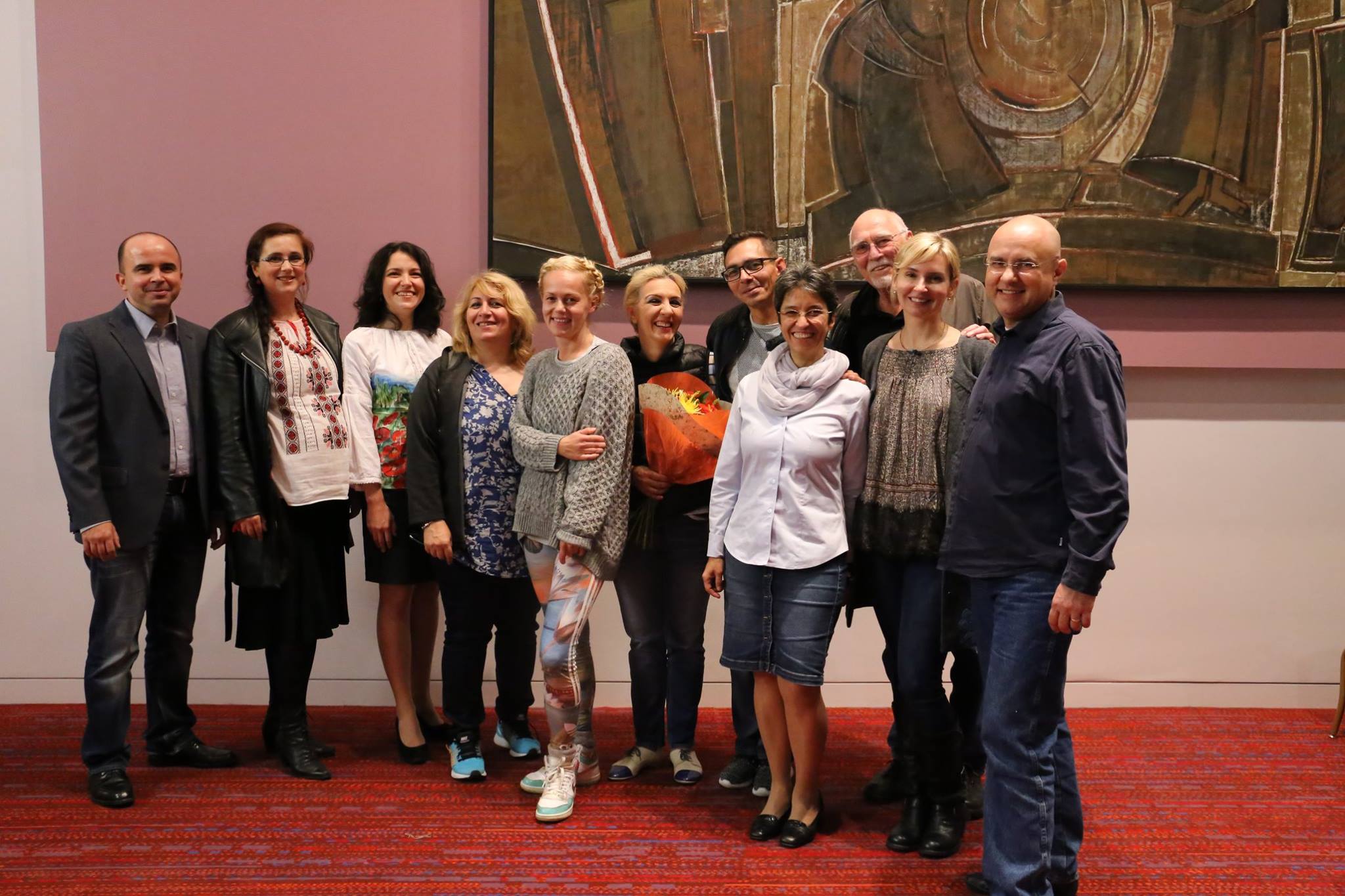Theater, film, and multimedia director Carmen Lidia Vidu is known as the first to introduce video projections and multimedia in Romanian theatre. Her impressive work includes video and visual arts installations, animated films, documentaries, and theatre productions. From art installations Dancing City: Bucharest, Brasov, Cluj, Timisoara (2013) and animated documentary A Brief History of Astra Film (2013), to the short Bucharest – The World of Ion Bârlădeanu and Carmen Vidu (2015) and My Romanian Diary (2019), Carmen Lidia Vidu demonstrated her creative openness to experimentation. Me, a Dollhouse (2015), her feminist adaptation of Ibsen's drama, was performed internationally with great success, as was her multimedia show Lullaby: A Story about Maria Tănase (2013-2016). Last year, she was acclaimed for directing two major operas for the George Enescu Festival: Benjamin Britten's Peter Grimes and R. Strauss' The Woman without a Shadow.

She was interviewed for Stories OFF the Wall: Quarantine Writings and Interviews by Ileana Marin.
IM: Congratulations for the acclaim you received for the video you created for Benjamin Britten’s opera Peter Grimes, performed for the first time in Romania last year, at the George Enescu Festival. It seems that the premiere of Britten’s opera somehow overshadowed your vision of Richard Strauss’ The Woman without a Shadow. How do you explain this?
CLV: Peter Grimes is close to a music-hall. There’s no way to leave the hall without humming the tunes from this opera. The story is filmic and the topic, location, and protagonists are contemporary. The music is simply sensational. I fell in love with this music for life. I am a person who embraces life fully, and I can tell you that working on such a jewel was a grand opportunity. The whole packet is of a lyrical and dramatic force to which the noir and elegance add a unique aspect. This aspect makes Peter Grimes one of the “Best 100 operas of all times”. I “drew” Peter Grimes frame by frame. It was a combination of cartoon and graphic film. It could be that this new style attracted the public and I was touched by the appreciation of the public at large, as well as of the reviewers. I was also pleased to see the show ranked high in several categories. The Woman without a Shadow opera is a difficult score. You need years to understand it and appreciate its sophistication. Its narrative was hard to decipher and it required a lot of diligence. I love to experiment, as if I were in a lab, doing research. I design my vision after the research is completed. I do as much research as I can on the author, as well as on the history of the piece. I look for the roots of the characters as they are the sources of the story. I also look into the author’s private life because I know that I am going to find something in the libretto. I worked hard to break the cipher of The Woman without a Shadow. For the visual part I relied on the drawings made when the opera was premiered in 1919. Basically, I gave a new life to those decors and characters. International chronicles and the conductor’s feedback validated the efforts of my team who deserves all the credit. While The Woman without a Shadow is a difficult opera, Peter Grimes is one you can whistle and hum. Hence the public’s reaction. In the end, I have gained two unique experiences of work and love. (The team Carmen mentioned in her answer includes editor Cristina Baciu and illustrator Gabriela Schinderman.)

IM: You were the first Romanian multimedia artist who introduced video projection in theatre and performance arts. Do you remember how your experiments were received then? Did you think that those “experiments” would bring about new artistic strategies, which would decisively open another path in Romanian performative arts?
CLV: I created niche shows. At 23, in 2003, I started working in Bucharest with photo cameras, taking live photos, recording live shows, with video projections, animations, life music, and electronic music. People told me that I was making multimedia theatre, but I was not aware of it. Later, I realized that I was considered the first multimedia theatre director in Romania. I was young, examining my emotions and thoughts. I was reading dramas and I was looking for myself in their characters. Video production was, and still is, my artistic signature feature in theatre. Multimedia is an active protagonist in my shows, as well as an investigative tool of human nature and art. I don’t want to sound pretentious but experimentation and research give me the pleasure of playing, of limitedness, fearlessness, pretentiousness, freed from expectations. I love to experiment because thus I can find joy. This does not mean that I don’t work hard: I do. In addition, I advocate a very honest relationship with my work and the people I make part of my events. I am still a niche director because I introduced multimedia on theatre stage, I am a woman director in a sexist Romania, and because now I make documentary theatre. I feel that now I try to understand the cultural market, more than theatre show formulas. My focus has moved from my work onto the others.

IM: On your blog I found this motto "The danger of vanity lurks around us and drives us towards isolation. We no longer listen to anything but opinions which confirm ours." I was surprised to see that you were talking about the isolation into which we are pushed by our own vanity. How did you reach this conclusion? How do you now see the isolation caused by vanity, in comparison to the isolation in which all of us are trapped?
CLV: I have always tried to be fully engaged with reality and have a deeply personal relation with life. For several years I lived in imaginary worlds, in fantasia, in worlds where I thought I had overcome my anxiety. I lied to myself for a long time because I thought that things would work out that way. I then traded theatre for film, videoclips, personal exhibits; I changed my cultural discourse from multimedia to documentation, and I have been invited to international festivals. However, in one thing I have not succeeded: leaving behind the isolation into which my own vanity had trapped me years ago. There is something that makes me reject my professional guild and not be accepted by them. Where did all this start? I would say from lack of education, infantilism, false showmanship, fear, fear of not making wrong decisions, and lack of maturity. What have I learned from all this? That nobody saves oneself and that it is to our advantage to work in teams.
IM: What does a creative artist like yourself do during the isolation caused by the COVID 19 pandemic?
CLV: This pandemic started while I was in the middle of the National Theatre rehearsals for Romanian Diary. 1989 - a Diary of a Revolution. We had to stop rehearsals and protect ourselves from this virus by staying at home. We have continued working on the show online. We still follow the regular work schedule from 10 to 7 every day. My life has not changed very much in this respect. Maybe I am more relaxed when I read. I started testing a meditation technique called “vipassana”, I help my neighborhood church broadcast the service online. I am living with my fears. I cannot find my peace. I am worried about my parents who live in Arad, a city on the Western border with Hungary. Over there, the number of COVID 19 cases is high. Creativity and fear don’t go very well together. It has been, however, a period during which I have asked myself questions about the status of the artist in Romania. It is a moment when we may understand the power of those who work in a team.
IM: What relationship did you have with your spectators in Romania before the pandemic?
CLV: Since I started working in theatre, I have wanted to design cultural events and not shows. During recent years, Q&A sessions have become regular episodes after premieres, at festivals, or on tours. I always request organizers to leave time for Q&As. I also deliver Artist Talks which are now more and more popular and promoted by cultural communities. They break barriers and that’s fantastic. To promote the shows we invest in social media, blogs dedicated to shows, teasers, and trailers.
The theatre culture in Romania is very lively. I live in Bucharest but my shows are performed throughout the country. Every year I try to take a show abroad at least once. In 2016, I launched the documentary project Romania Diary. This way I met Szeklers, Swabians, and people from Dobrudja. I went to Covasna, Constanța, Mogoșoaia, and Timișoara. TheRomania Diary helped me answer questions which had put my life on hold. For many years I wanted to be a director in Bucharest, a director in the capital; yet, in 2016, I decided to leave it. I have lent myself to others. The artists with whom I worked in Sfântu Gheorghe, Constanța, and Timișoara cured me; our conversations were a sort of therapy for me. I have a sincere love for them.
This is the meaning of the Romania Diary: the actor becomes a role model for the public. I don’t mean it as a super-hero with supernatural powers, but as a hero who literally serves as a model, in whom I see myself, with whom I empathize, who makes me diagnose myself and unload the burden that I have carried my entire life. I would love to live in a world with no cultural borders so that there would be no borders separating Romania from the rest of the world, separating the public from artists, separating myself from the institution of the theatre.

IM: Are you still in touch with your public now?
CLV: Interestingly enough, the public have reached out to me. People who watched my shows online, wrote to me. I did not expect such a reaction, mostly because 90% of those who wrote were people I hadn’t met. During isolation, I continued to work online, I adapted. I accepted that the world is changing and that we are living in a unique moment in history. The entire world just stopped to save humanity. An entire world blocked its economy to save mankind. So, I allow myself to enjoy this moment that is writing our history.
IM: In the end, would you be kind and share your memories of your visit to Seattle, and if that short stay left a mark on you?
CLV: I arrived in Seattle in October 2016 after a couple of difficult months. Something didn’t quite work for our team at that time. We had to find a replacement for one member of our team and deal with fragile adjustments for our show. In the end, all four of us made huge efforts to function as a team and bring the Maria Tănase show to Seattle.
First, we were very much impressed by the hall in which we performed, Nesholm Family Lecture Hall at Seattle Center. The place itself overwhelmed us with its spectacular dressing rooms, a large backstage space, and an extremely efficient technician. The public who came to see the show was – I would say – the smartest I have ever met. I mention this aspect in all my interviews. The Q&A after the show was a real treat for me. I had the opportunity to interact with people who had the ability to look beyond the story line and superficial emotions. Meeting and collaborating with the ARCS team offered me the opportunity for social and cultural dialogue that proved to be quite important for me. I returned to Romania very happy with the success of the show in the US, happy that I saw Kurt Cobain’s house, visited and had lunch at the dinner featured in Twin Peaks. I was also impressed by the fact that Seattle bookstores have a corner dedicated to local authors. Last but not least, Jim Augerot’s voice – aka Jean Pierre Francoise Ogerot – made me fall in love with jazz. 
IM: Thank you very much for taking from your time to answer my questions.
Pictures:
1) Carmen Lidia Vidu online with her team, April 2020;
2) Carmen Lidia Vidu during rehearsals at the Palace Hall, the George Enescu Festival, Bucharest, September 2019 (Photo Andrada Pavel);
3) Standing ovation after Richard Strauss' The Woman without Shadow, September 4, 2019 (Photo Andrada Pavel);
4) CLV before Richard Strauss' The Woman without Shadow, Palace Hall, the George Enescu Festival, Bucharest, September 2019 (Photo Andrada Pavel);
5) CLV on the empty stage of the National Theatre in Bucharest, the day when rehearsals for Romanian Diary. 1989 - a Diary of a Revolution. were canceled; 6) CLV in Seattle, October 2016.
6) CVS in Seattle, after her show Maria Tănase, in 2016.
